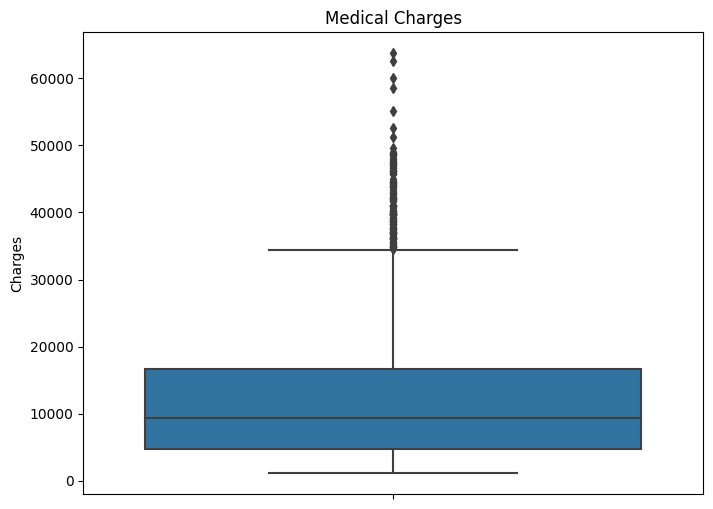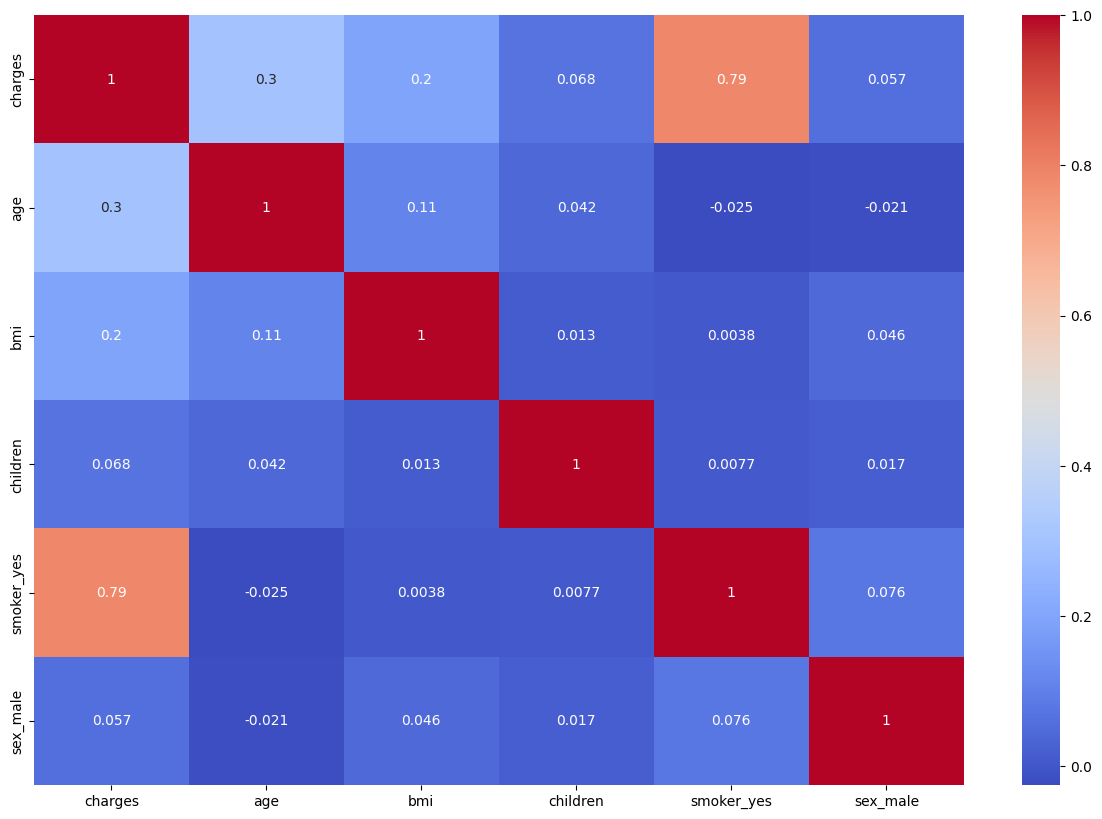Decision Tree Regressor Analysis on Insurance Charges: The Impact of Age, BMI, and Smoking Status#
Author:Xifan Jiang
Course Project, UC Irvine, Math 10, S23
Introduction#
Insurance premiums vary significantly among individuals, influenced by various factors such as age, body mass index (BMI), or smoking habits. This project employs a Decision Tree Regressor, a machine learning algorithm, to model and predict insurance charges based on those parameters and more. The objective is to explore how accurately these individual health indicators can predict insurance charges, providing valuable insights for both insurers and policyholders.
Import Data and Clean Data#
import pandas as pd
import altair as alt
from sklearn.model_selection import train_test_split
from sklearn.metrics import accuracy_score
from sklearn.tree import DecisionTreeRegressor
import math
from sklearn.metrics import mean_squared_error
from sklearn.linear_model import LinearRegression
import matplotlib.pyplot as plt
from sklearn.tree import DecisionTreeRegressor, plot_tree
import seaborn as sns
df=pd.read_csv('insurance.csv')
df.head(5)
| age | sex | bmi | children | smoker | region | charges | |
|---|---|---|---|---|---|---|---|
| 0 | 19 | female | 27.900 | 0 | yes | southwest | 16884.92400 |
| 1 | 18 | male | 33.770 | 1 | no | southeast | 1725.55230 |
| 2 | 28 | male | 33.000 | 3 | no | southeast | 4449.46200 |
| 3 | 33 | male | 22.705 | 0 | no | northwest | 21984.47061 |
| 4 | 32 | male | 28.880 | 0 | no | northwest | 3866.85520 |
Check for missing value and describe the data
df.info()
<class 'pandas.core.frame.DataFrame'>
RangeIndex: 1338 entries, 0 to 1337
Data columns (total 7 columns):
# Column Non-Null Count Dtype
--- ------ -------------- -----
0 age 1338 non-null int64
1 sex 1338 non-null object
2 bmi 1338 non-null float64
3 children 1338 non-null int64
4 smoker 1338 non-null object
5 region 1338 non-null object
6 charges 1338 non-null float64
dtypes: float64(2), int64(2), object(3)
memory usage: 73.3+ KB
df.isnull().sum()
age 0
sex 0
bmi 0
children 0
smoker 0
region 0
charges 0
dtype: int64
Since there isn’t any null result, we don’t need to drop any rows or columns at all
retain and reorder the columns only seems needed
df=df[['charges','age','bmi','children','smoker','sex']]
df.head()
| charges | age | bmi | children | smoker | sex | |
|---|---|---|---|---|---|---|
| 0 | 16884.92400 | 19 | 27.900 | 0 | yes | female |
| 1 | 1725.55230 | 18 | 33.770 | 1 | no | male |
| 2 | 4449.46200 | 28 | 33.000 | 3 | no | male |
| 3 | 21984.47061 | 33 | 22.705 | 0 | no | male |
| 4 | 3866.85520 | 32 | 28.880 | 0 | no | male |
create dummy for sex and smokers
df = pd.get_dummies(df,drop_first=True)
df.head()
| charges | age | bmi | children | smoker_yes | sex_male | |
|---|---|---|---|---|---|---|
| 0 | 16884.92400 | 19 | 27.900 | 0 | 1 | 0 |
| 1 | 1725.55230 | 18 | 33.770 | 1 | 0 | 1 |
| 2 | 4449.46200 | 28 | 33.000 | 3 | 0 | 1 |
| 3 | 21984.47061 | 33 | 22.705 | 0 | 0 | 1 |
| 4 | 3866.85520 | 32 | 28.880 | 0 | 0 | 1 |
Visualize the Data
plt.figure(figsize=(8, 6))
df['smoker_yes'].value_counts().plot(kind='pie', autopct='%1.1f%%')
plt.title('Smoker vs. Non-Smoker Distribution')
plt.show()

plt.figure(figsize=(8, 6))
sns.boxplot(data=df, y='charges')
plt.ylabel('Charges')
plt.title('Medical Charges')
plt.show()

Using scatter plot to see which may contribute to the charges
c1=alt.Chart(df).mark_circle().encode(
x='bmi',
y='charges',
color='sex_male:N',
)
c1
#This chart show that there isn't obivious relationship for sex at all
alt.Chart(df).mark_circle().encode(
x='children:N',
y='charges',)
#it seems that there are some relationship with children, but not a lot
alt.Chart(df).mark_circle().encode(
x='bmi',
y='charges',
color='smoker_yes:N',
)
# smokers do generally have a higher charge
alt.Chart(df).mark_circle().encode(
x=alt.X('age', scale=alt.Scale(domain=(18,64))),
y='charges')
#higher age seems have a higher charges, especially the lowest charge for each age
alt.Chart(df).mark_circle().encode(
x=alt.X('bmi', scale=alt.Scale(domain=(10,55))),
y='charges')
# the result show that BMI seems not really important, a higher BMI seems only increase the celling of charge but not floow.
Generally, from those charts, we can see that all the features seems important but the sex. It seem that sex is not relate to the charges at all for any age group. And smoke contribute the most to the charges. And we will test it using linear regression and decision tree regressor
Read the Correlation map between each variables, this is also a good way to understand the importace. From this map, we know that the thing contribute the most to the charge is also smoker, and age being second.
corr_df = df.corr()
plt.figure(figsize=(15,10))
sns.heatmap(corr_df, annot=True, cmap="coolwarm")
<AxesSubplot:>

Split the Data for Train and Test#
features = ['age','bmi','children','smoker_yes','sex_male']
X = df[features]
y = df['charges']
X_train, X_test, y_train, y_test = train_test_split(X, y, train_size=0.2, random_state=42)
Linear Regression#
reg=LinearRegression()
reg.fit(X_train, y_train)
print('The train score is ' + str(reg.score(X_train, y_train)))
print('The test score is ' + str(reg.score(X_test, y_test)))
print('The score is ' + str(reg.score(df[features], df['charges'])))
The train score is 0.7555272998081446
The test score is 0.7439322852344854
The score is 0.7464160661734538
There is no overfitting for the linear regression
reg_mse_train = mean_squared_error(y_train, reg.predict(X_train))
math.sqrt(reg_mse_train)
6187.598871935761
reg_mse_test = mean_squared_error(y_test, reg.predict(X_test))
math.sqrt(reg_mse_test)
6072.915873685427
df['test'] = df['charges'].mean()
mse_test = mean_squared_error(df['test'],df['charges'])
math.sqrt(mse_test)
12105.484975561612
for name, coef in zip(features, reg.coef_):
print(name, "=", coef)
age = 245.955948591765
bmi = 383.9550413407004
children = 395.24145654726436
smoker_yes = 24902.795380463333
sex_male = -288.927901059906
The coefficient of regression result seems prove the hypothesis
Decision Tree Regressor and MSE#
dtr = DecisionTreeRegressor(max_depth=10, min_samples_split=6, min_samples_leaf=10, max_features='sqrt',random_state=10)
dtr.fit(X_train, y_train)
print('The train score is ' + str(dtr.score(X_train, y_train)))
print('The test score is ' + str(dtr.score(X_test, y_test)))
print('The score is ' + str(dtr.score(df[features], df['charges'])))
The train score is 0.7969213149718739
The test score is 0.7649359650091231
The score is 0.7717672349529094
There is no overfitting for the decision tree regressor.
mse_train = mean_squared_error(y_train, dtr.predict(X_train))
math.sqrt(mse_train)
5639.481005734181
mse_test = mean_squared_error(y_test, dtr.predict(X_test))
math.sqrt(mse_test)
5818.525547701853
df['test'] = df['charges'].mean()
mse_test = mean_squared_error(df['test'],df['charges'])
math.sqrt(mse_test)
12105.484975561612
the result of mse also seems good for prediction
plt.figure(figsize=(200,100))
plot_tree(dtr, feature_names=features, filled=True)
plt.show()

See the importance for each parameter
for name, importance in zip(features, dtr.feature_importances_):
print(name, "=", importance)
age = 0.1492232839167378
bmi = 0.08866239089208457
children = 0.009894399841378665
smoker_yes = 0.7520104207980166
sex_male = 0.00020950455178229155
The coefficient of regression result seems prove the hypothesis
Visulization the Result#
df['Pred_reg'] = reg.predict(df[features])
df['Pred_dtr']=dtr.predict(df[features])
c1=alt.Chart(df).mark_circle().encode(
y='charges',
x='bmi'
)
c2=alt.Chart(df).mark_circle(color='red ').encode(
y='Pred_reg',
x='bmi'
)
c3=alt.Chart(df).mark_circle(color='blue').encode(
y='Pred_dtr',
x='bmi'
)
c1+c2
c1+c3
Summary#
For this project, I have do the regression and decision tree regressor for the insurance premium on age, children, bmi, smoker and sex. Before I have do the machine learning and the regression, I predicted with chart that age, children are not that important and the smoker is a great contributer to the premium. And the both of the Data have proved my prediction. What’s more, the decision tree regressor have a higher R^2 (around 0.81) than linear regression(around 0.75).
References#
Your code above should include references. Here is some additional space for references.
What is the source of your dataset(s)?
This dataset is downloaded from Kaggle(https://www.kaggle.com/mirichoi0218/insurance)
List any other references that you found helpful.
chatGPT(https://chat.openai.com/) it helps me to understand the deeper on machine learning
the decision tree regressor details https://scikit-learn.org/stable/modules/generated/sklearn.tree.DecisionTreeRegressor.html
heatmap from sns package https://seaborn.pydata.org/generated/seaborn.heatmap.html
Submission#
Using the Share button at the top right, enable Comment privileges for anyone with a link to the project. Then submit that link on Canvas.
